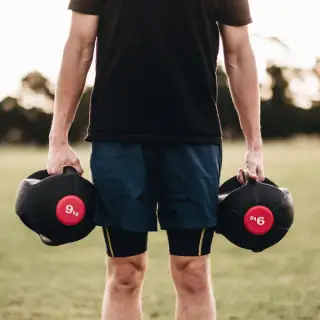
“People often think that if they have joint pain, they shouldn’t exercise,” says Kelly Todd, P.T., D.P.T., a physical therapist with Athletico Physical Therapy. “However, exercise can actually help you relieve joint pain.”
Yes, even joint pain caused by rheumatoid arthritis.
“Rheumatoid arthritis is an autoimmune disease where the body attacks the lining that covers joints,” explains James Lee, P.T., D.P.T., a physical therapist at the Hospital for Special Surgery in New York City. “This creates inflammation of the joints, which over time changes the joint complex. Exercise can improve joint function and mobility and prevent further damage.”
If you suffer from joint pain caused by conditions like rheumatoid arthritis, the following five exercises can help tame your pain. You can do any of them as a warmup to your regular workout, or perform them all in a row as a joint-friendly circuit.
And remember: It’s always best to talk to a doctor before beginning any exercise program.

Isometric Lunge: Why It’s Great
Muscular weaknesses can throw off healthy motion in the knee, causing pain. But many of the exercises that strengthen the knee for better function, such as lunges, can aggravate joints that already are tender due to such conditions as rheumatoid arthritis. With isometric moves, you hold a position rather than moving through the exercise. This allows you to focus on training your knee through pain-free ranges of motion, says Matt Kite, C.S.C.S., a master coach with D1 Training.
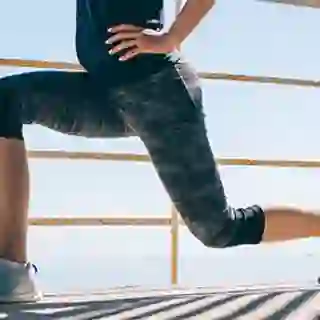
Isometric Lunge: How to Do It
Place your hands on your hips and stand tall with your shoulders back and core braced. Take a giant step backward with one leg to land on the balls of your foot, and then slowly lower your body toward the floor. Once you reach the desired (and comfortable) depth, hold for 30 seconds, or as long as you can without knee pain. Return to stand, then repeat on the opposite side. Perform with deep, medium, and shallow lunges to strengthen your knees at various angles.

Dumbbell Farmer’s Carry: Why It’s Great
This simple exercise strengthens joints throughout the entire body while limiting any impact forces that could contribute to pain for those with rheumatoid arthritis, explains Douglas Ebner, P.T., S.C.S., a physical therapist at The Ohio State University Wexner Medical Center. Like the isometric lunge, it’s also all about “time under tension,” training your body to properly control motion over a longer period of time, versus pounding your joints with rep after rep.
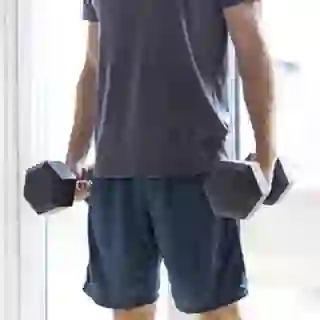
Dumbbell Farmer’s Carry: How to Do It
Stand tall with a heavy dumbbell in each hand down at your sides, palms facing in. Keeping your chest up and core braced, walk forward slowly for 30 seconds. If balance isn’t an issue, you can walk backward as well. Keep an upright torso and do not let the weight dump into your low back. Imagine there’s a string connected to the top of your head that’s pulling you toward the ceiling.

90/90 Hip Switch: Why It’s Great
If you experience pain or lack of mobility in your hips, this bodyweight drill may be the perfect antidote. It helps to improve your range of motion so that you can perform other hip strengtheners — squats, side lunges, or simply taking the stairs—without discomfort. The goal: “Find the balance between mobility versus immobility without aggravating rheumatoid arthritis symptoms,” Lee says.
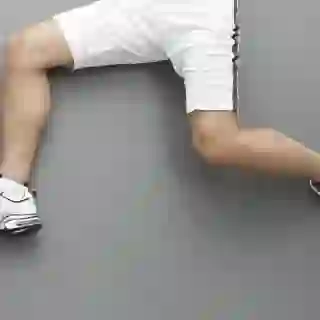
90/90 Hip Switch: How to Do It
Sit on the floor with your knees bent and heels on the floor in front of you, slightly greater than shoulder-width. Place both hands on the floor behind your hips for balance, if needed. Next, drop both knees to one side of the body, letting your torso rotate as you do. Stop when both knees are as close to the floor as is comfortable and your torso is turned so that you are facing the direction of your lead knee. Pause, then repeat in the opposite direction. Continue alternating back and forth; aim for 10 to 15 reps on each side.

Wall Slide: Why It’s Great
The shoulder is the most mobile joint in the human body, which means it also tends to be the least stable (read: most prone to general crankiness), Lee says. Unfortunately, it’s also one of the most commonly affected joints in rheumatoid arthritis. The wall slide, however, helps strengthen the muscles of the rotator cuff to keep the shoulder moving properly and without pain—and without the use of any weights. Integrate into the warmups of upper- and total-body workouts.
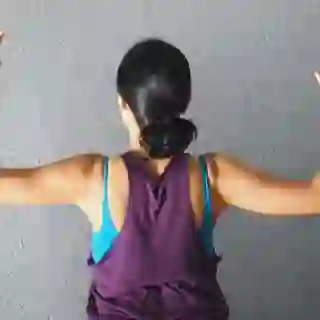
Wall Slide: How to Do It
Stand with your back, hips, and head against a wall. Bend your elbows to 90 degrees and press them and the backs of your hands on the wall behind you as if you are trying to mimic a football goal post. Slowly straighten your elbows to slide your arms up the wall. Pause, then reverse the movement to return to back to the goal-post position. That’s one rep; aim for 10 to 15. Work to keep your back, hips, head, and arms in contact with the wall at all times, minimizing any arch in your back as you do so.
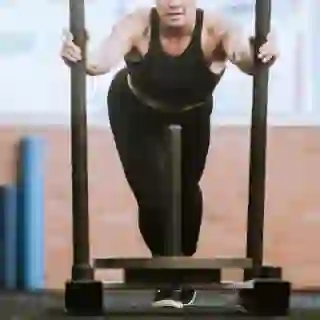
Weighted Sled Push: Why It’s Great
They might look intimidating, but sled pushes—when loaded appropriately—are great for all fitness levels because they improve stability in the shoulders, elbows, spine, knees, hips, and ankles all at once. “They are low-impact and build up the tolerance of the joints to load over a longer time frame compared to other exercises done for strengthening at the gym,” Ebner says. Translation: You’re less likely to get injured or exacerbate rheumatoid arthritis symptoms.
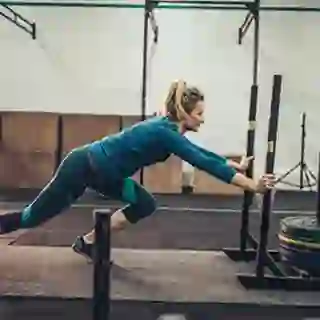
Weighted Sled Push: How to Do It
Take an athletic posture, leaning into the sled with your arms fully extended, grasping the handles. Push the sled as fast as possible, focusing on extending your hips and knees to strengthen your posterior chain. Aim for six to 10 reps.

Final Considerations
These exercises are most effective when they’re performed slowly, under control, and at a level of intensity that does not surpass a 6 on a scale from 1 to 10, Kite says. If you have sharp pain or pain that last longer than 48 hours after your workout, consider modifying your workouts to decrease overall work or intensity, Ebner says. Also, remember that everyone experiences rheumatoid arthritis joint pain in their own, unique ways, so never hesitate to schedule an appointment with a physical therapist for a full evaluation and a list of the best exercises for you.